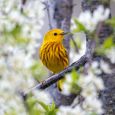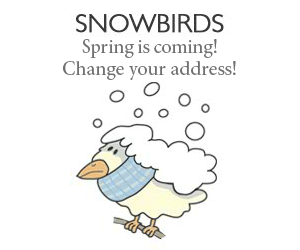The Gift of South Dakota
Subscriptions to South Dakota Magazine make great gifts!
Subscribe today — 1 year (6 issues) is just $29!
Why We Go Birding
I have noticed that people may not understand what I'm doing when I go birding. They sometimes think that I'm going just to look at pretty birds. That’s true, but there is more to it for birders like me.
Searching for Different Species
When migration begins, I want to see the different birds that pass through because they’re only in our area during part of the spring and fall. A bird that’s new to our area or an early arrival would be nice to see. A rare bird would be great. If a birder sees an interesting or rare bird, it is reported to an email listserv so that other birders may go see it, too. If it is indeed a rare bird, I record what I observe and try to get a photo and/or video. My detailed report goes to a committee of the state ornithological union. If they decide I was correct in my identification, it will be entered into the state birding records. It is very gratifying for a birder to find a rare bird and have the report accepted.
Adding to My List
Birders like me keep many different lists: yard, patch, town, state, year, counties and life lists. I am very list-motivated, so I enjoy searching for different birds to add. It’s like a game for birders. The South Dakota Ornithologists’ Union website lists the top birders in the state, which is another fun goal to try to achieve.
Citizen Science
I keep a list of the birds I see and note certain details: date, place, time of day, duration, species and quantity. I also note breeding codes, such as whether a bird is nest-building, on the nest, carrying food or nesting material, feeding young, etc. It is work to get this information collected and put onto the database, but it is a great feeling to help with citizen science and know that you are contributing to conservation.
Later I put all of this information onto eBird. Launched in 2002 by the Cornell Lab of Ornithology and National Audubon Society, eBird shares these observations with a global community of educators, land managers, ornithologists and conservation biologists. Also, eBird keeps track of birders’ lists, so that is very handy for us. At the end of each reporting season, we can have our eBird information sent directly to the state database, so it will be part of our state's birding records as well. In this way, birders are helping science by collecting data for state and global databases.
Birding is Fun
Birding is fun whether you keep lists or just observe birds. When I go birding I get exercise while hiking, yet it is very relaxing. I see wonderful places, wild animals and beautiful wildflowers, as well as birds. I enjoy seeing the variety birds, watching their behavior and listening to them sing. Birding with other birders is also enjoyable, and it is nice to spend time with like-minded people.
While concentrating on bird songs and bird identification, my troubles and worries melt away. My husband often tells people how happy I am when I return from birding. He is right. I am so thankful that I went to my first birding festival four years ago and that I was turned on to birding. This year’s South Dakota Birding Festival at Fort Randall will be May 1-3 at Pickstown. A new gathering, the Prairie Birding Festival, will be in Mitchell on May 8-10. More information is available online. You may want to come and check out these festivals for yourself.
Birding is a fulfilling activity and is enjoyed in varying degrees by different birders. I wish everyone could get outdoors more often to experience all that nature has to offer. Until then I will do my best to get people interested, so that they can feel the same joy that I have felt.
Kelly Preheim is a South Dakota Ornithologists' Union board member. She teaches kindergarten at Armour Elementary, where she incorporates lessons on birding into the classroom. Her students have been recognized nationally for their knowledge of birds. Visit Preheim’s Flickr site to see photos from her birding adventures.


















Comments